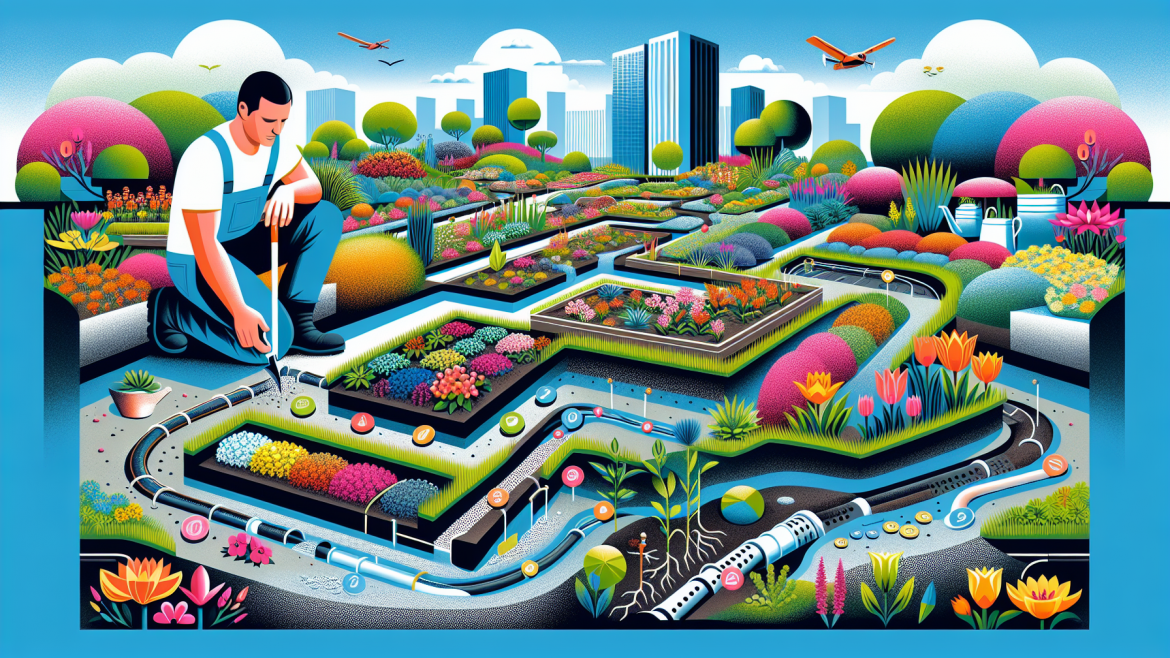Managing garden drainage is crucial for maintaining healthy plants and preventing waterlogging. Poor drainage can lead to numerous problems, including root rot, plant diseases, and soil erosion. Ensuring your garden has effective drainage will promote a thriving, vibrant landscape. Here are some essential tips to help you improve garden drainage.
Assessing Current Drainage Conditions
Before making any changes, it’s important to understand the existing drainage situation in your garden. Here’s how to assess your garden’s drainage:
Observe Water Flow: After a heavy rain, watch how water moves and pools in your garden. Areas where water stagnates are likely in need of improved drainage.
Soil Test: Perform a simple soil test by digging a hole about one foot deep and filling it with water. If water remains in the hole for over 24 hours, your soil has poor drainage properties.
Identify Problem Areas: Take note of low spots or areas with compacted soil, as these are common culprits for poor drainage.
Improving Soil Structure
Enhancing soil structure can significantly boost garden drainage. Here’s how:
Organic Matter: Incorporate organic matter such as compost, aged manure, or leaf mold into your soil. This improves soil structure by increasing porosity, allowing water to drain more efficiently.
Sand and Grit: For heavy clay soils, adding coarse sand or horticultural grit can enhance drainage. Avoid fine sand, as it can lead to further compaction.
Cover Crops: Planting cover crops like clover or rye can improve soil texture. These crops break up compaction, add organic matter, and increase soil aeration.
Using Raised Beds and Contoured Planting
Raised beds and contoured planting can help with drainage and prevent water from pooling around plant roots.
Raised Beds: Constructing raised beds allows for better control over soil quality and drainage. Raised beds lift plant roots above the natural soil line, ensuring they remain drier.
Contour Planting: On sloped land, use contour planting to reduce runoff and increase water infiltration. Contour planting involves creating ridges and furrows that run perpendicular to the slope, slowing water movement and allowing it to soak into the soil.
Installing Drainage Systems
For areas with severe drainage issues, installing a dedicated drainage system might be necessary.
French Drains: A French drain is a trench filled with gravel and a perforated pipe that redirects water away from problem areas. It’s an effective solution for large gardens or areas with persistent waterlogging.
Dry Wells: Dry wells act as underground reservoirs, collecting and dispersing excess water. Connecting downspouts or French drains to dry wells can help manage water flow effectively.
Sump Pumps: In extreme cases, a sump pump can be installed to remove excess water from flooded areas. This method is typically used for more severe drainage problems.
Regular Maintenance and Monitoring
Maintaining good drainage requires regular monitoring and upkeep:
Clear Debris: Regularly clean gutters, downspouts, and drainage channels to prevent blockages. Ensure water flows freely through established pathways.
Check Mulch Levels: Avoid over-mulching garden beds, as excessive mulch can impede water infiltration and exacerbate drainage issues.
Monitor Plant Health: Keep an eye on plant health, particularly in newly improved areas. Signs of distress may indicate underlying drainage issues that need further attention.
By taking these steps to improve garden drainage, you can create a healthier environment for your plants. Proper drainage helps prevent diseases, reduces soil erosion, and ensures your garden thrives throughout the seasons.
